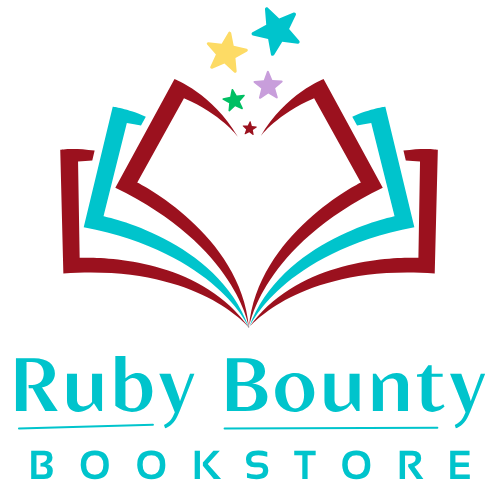6 Essential Books for Children About Emotional Intelligence and Anger Management

A curated book list for parents, teachers, and counselors supporting children in understanding and managing their emotions, with a special focus on anger and building emotional intelligence— curated by The Children’s Book Review and presented in partnership with Bella and Bird Books.
Understanding and managing emotions—especially challenging ones, such as anger—is one of the most essential sets of skills children can develop. This carefully curated list of picture books offers gentle, age-appropriate guidance to help young readers recognize their emotions, develop healthy coping strategies, and build emotional intelligence that will serve them throughout their lives. Utilizing practical tools for emotional regulation, self-awareness, and communication, each book opens doors for meaningful conversations about feelings and helps children understand that all emotions are normal and manageable with the right strategies.
Here are our top six picks for helping children explore emotional intelligence and anger management:
When Henry storms into the pasture angry about being denied pie, wise therapy horse Bella and her friend Bird teach him that anger is normal while providing concrete coping tools. Henry learns box breathing, cool-down counting, and how to use an emotion wheel to find words for his feelings. Written by a licensed clinical therapist, this research-backed story empowers children to handle emotions with confidence while honoring their feelings.
Buy the Book
This Caldecott Honor-winning book follows Sophie’s journey from explosive anger when her sister takes her toy to a state of natural calm after time alone in nature. The vibrant illustrations use color to represent Sophie’s emotional journey—from fiery reds and oranges during anger to cool blues and greens as she finds peace. Sophie’s process of self-regulation without adult intervention provides a realistic model for anger management.
Buy the Book

In My Heart: A Book of Feelings
Written by Jo Witek
Illustrated by Christine Roussey
Ages 2-6 | 28 Pages
Publisher: Abrams Appleseed (2014) | ISBN-13: 978-1419778520
This New York Times bestselling interactive book explores emotions through lyrical text and heart-shaped die-cuts that extend through each spread, describing how feelings physically feel inside our bodies. The unique design, featuring decreasing heart cutouts, creates a multi-colored heart that spans the entire book, encompassing happiness, sadness, anger, fear, and more. Rather than simply naming emotions, Witek uses relatable metaphors like “When I get really angry, my heart feels like it’s going to explode!”
Buy the Book

Anh’s Anger
Written by Gail Silver
Illustrated by Christiane Krömer
Ages 4-8 | 40 Pages
Publisher: Plum Blossom Books/Parallax Press (2009) | ISBN-13: 978-1888375947
This award-winning book takes a mindfulness-based approach when five-year-old Anh’s anger literally comes to life as a character he can talk to and understand after his grandfather guides him to “sit with his anger.” The stunning handmade collages use mixed media to show anger as an external entity that Anh learns to work through constructively. Unlike many anger books, it emphasizes taking responsibility for actions while processing emotions fully, drawing from Buddhist teachings and the wisdom of Thich Nhat Hanh.
Buy the Book

Ravi’s Roar
Written and Illustrated by Tom Percival
Ages 3-6 | 32 Pages
Publisher: Bloomsbury Children’s Books (2020) | ISBN-13: 978-1547603008
This NAPPA Award-winning book from the “Big Bright Feelings” series shows Ravi transforming into a roaring tiger when frustrations build up from being the smallest in his family. The illustrations cleverly depict his transformation through color, gradually turning more orange until he becomes a fierce tiger, teaching children that while anger may feel powerful, it can also make us lonely and isolated. The story beautifully demonstrates both the consequences of uncontrolled anger and the healing power of apologies and family forgiveness.
Buy the Book
This interactive workbook uses cognitive-behavioral techniques to help children understand anger triggers, recognize physical warning signs, and practice “anger dousing” methods. The book includes hands-on activities, thought-changing techniques, and problem-solving approaches that children can apply in real situations. Dr. Huebner’s conversational tone and practical exercises make complex psychological concepts accessible to children while providing structured support for developing emotional regulation skills.
Buy the Book
Using These Books Effectively
For Parents and Caregivers:
- Read these books during calm moments, not in the heat of emotional situations
- Ask open-ended questions about the characters’ feelings and choices
- Share your own experiences with similar emotions to normalize the child’s experiences
- Practice the coping strategies together when emotions are manageable
For Educators:
- Use these books as anchor texts for social-emotional learning lessons
- Create classroom emotion wheels or feeling charts inspired by the books
- Establish calm-down spaces where children can practice breathing techniques
- Build in regular check-ins about feelings and emotional experiences
For Counselors and Therapists:
- Incorporate these books into play therapy or counseling sessions
- Use the coping strategies as homework assignments for families
- Create personalized emotion regulation plans based on book techniques
- Reference familiar characters and strategies during difficult moments
Remember that building emotional intelligence is an ongoing process. These books provide frameworks and vocabulary, but children will need repeated practice and patient guidance as they develop these crucial life skills. The goal isn’t to eliminate difficult emotions, but to help children understand and manage them in healthy, constructive ways.
*Disclosure: Please note that this post may contain affiliate links that share some commission. Rest assured that these will not affect the cost of any products and services promoted here. Our team always provides their authentic opinion in all content published on this site.



